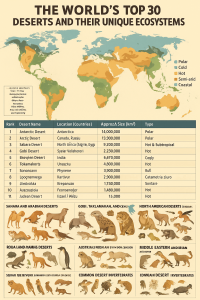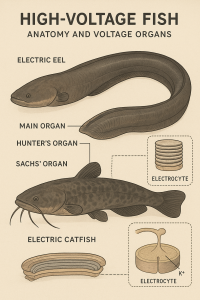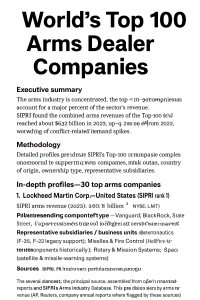Introduction
Throughout the natural world, female leadership takes many forms. From the deepest oceans to the highest mountains, from microscopic insects to the largest land mammals, countless species organize themselves around female authority, wisdom, and strength. This comprehensive exploration reveals 100 remarkable creatures where females hold positions of dominance, leadership, and social control.
Mammals
1. African Elephants (Loxodonta africana)
The quintessential matriarchal society, African elephant herds are led by the oldest and often largest female, called the matriarch. She possesses decades of accumulated knowledge about water sources, migration routes, and danger. Her memory can span 60+ years, guiding her family through droughts and dangers. When she dies, leadership typically passes to her eldest daughter.
2. Asian Elephants (Elephas maximus)
Like their African cousins, Asian elephants live in matriarchal family units. The matriarch makes critical decisions about movement, feeding locations, and responses to threats. Her experience is invaluable during environmental challenges, and younger females learn essential survival skills by observing her.
3. Killer Whales (Orcas) (Orcinus orca)
Orca pods are led by matriarchs who can live into their 90s. Post-menopausal females are particularly important, providing ecological knowledge and hunting strategies to younger generations. Resident orca societies show one of the strongest matriarchal structures in the animal kingdom, with males remaining with their mothers throughout life.
4. Spotted Hyenas (Crocuta crocuta)
Female spotted hyenas are larger, more aggressive, and socially dominant over all males. The alpha female leads the clan, and her daughters inherit high social status. Females have elevated testosterone levels and unique anatomy that initially confused scientists about their sex.
5. Bonobos (Pan paniscus)
These great apes live in female-dominated societies where females form strong coalitions. While not strictly matriarchal in hierarchy, females control food resources and often dominate males through cooperative alliances. Female bonding is central to their peaceful social structure.
6. Lemurs (Multiple Species)
Most lemur species exhibit female dominance. Ring-tailed lemurs, black lemurs, and sifakas all place females at the top of the social hierarchy. Females have priority access to food, choose mating partners, and lead group movements.
7. Ring-tailed Lemurs (Lemur catta)
In these charismatic primates, females are strictly dominant over males. They have first access to food and water, even during scarce times. Female coalitions maintain their dominance through cooperative aggression.
8. Black Lemurs (Eulemur macaco)
Female black lemurs outrank all males and demonstrate their dominance through feeding priority and aggressive interactions. The matriarch leads troop movements and decisions.
9. Sifakas (Propithecus)
These leaping lemurs maintain female dominance across their genus. Females lead group progressions through the forest canopy and have priority at feeding sites.
10. Naked Mole Rats (Heterocephalus glaber)
One of nature’s most extreme matriarchies, naked mole rat colonies are ruled by a single breeding queen who may reign for decades. She suppresses the reproduction of other females through behavioral and hormonal means, maintaining absolute reproductive control over the colony.
11. Meerkats (Suricata suricatta)
Meerkat mobs are dominated by an alpha female who monopolizes breeding. She may kill the offspring of subordinate females and often forces them to babysit her pups. Her aggression maintains social order and her genetic legacy.
12. Pilot Whales (Globicephala)
Like orcas, pilot whales live in matrilineal pods led by experienced females. Post-reproductive females are vital to the pod’s survival, guiding their families to feeding grounds and demonstrating the “grandmother effect” in cetaceans.
13. Sperm Whales (Physeter macrocephalus)
Female sperm whales form stable matrilineal units that can persist for decades. Older females lead these groups through the oceans, sharing babysitting duties and protecting calves from predators like orcas.
14. African Lions (Panthera leo)
While males are more visible, lion prides are fundamentally matriarchal. Related females form the stable core of the pride, cooperatively hunting, raising cubs, and defending territory. They remain together for life while males come and go.
15. Bats (Multiple Species)
Many bat species form matriarchal colonies. Female bats often roost together, excluding males except during breeding season. They share information about food sources and collectively raise young.
16. Common Vampire Bats (Desmodus rotundus)
Female vampire bats form cooperative groups where they share regurgitated blood meals with related females and their offspring. These female networks are essential for survival.
17. Egyptian Fruit Bats (Rousettus aegyptiacus)
Females dominate males in roosting sites and feeding locations. Female coalitions maintain prime roosting positions through coordinated defense.
18. Beluga Whales (Delphinapterus leucas)
Female belugas form matrilineal pods that remain stable over decades. Older females lead migrations and teach younger whales essential survival skills.
19. Bottlenose Dolphins (Tursiops truncatus)
Female bottlenose dolphins form long-term alliances and networks that can last entire lifetimes. These female bonds are crucial for calf-rearing and protection.
20. Grey Wolves (Canis lupus)
Wolf packs are typically led by a breeding pair, but the alpha female plays the dominant role in reproduction. She suppresses breeding in other females and makes key decisions about den sites and pup-rearing.
Birds
21. Emperor Penguins (Aptenodytes forsteri)
While both parents care for chicks, females make the initial investment with large eggs and choose their mates. Female choice drives male parenting behavior in this extreme Antarctic species.
22. Spotted Sandpipers (Actitis macularius)
These birds exhibit polyandry and sex-role reversal. Larger, more aggressive females defend territories, court multiple males, and leave egg incubation and chick-rearing entirely to males.
23. Red-necked Phalaropes (Phalaropus lobatus)
Females are larger, more colorful, and compete aggressively for males. After laying eggs, females abandon males to perform all parental care while they may seek additional mates.
24. Wilson’s Phalaropes (Phalaropus tricolor)
Following the pattern of sex-role reversal, female Wilson’s phalaropes are dominant, more ornamented, and leave males to incubate eggs and raise chicks.
25. Eclectus Parrots (Eclectus roratus)
Female eclectus parrots are more aggressive and dominant than males. They control nest hollows, which are scarce resources, and may mate with multiple males who bring food.
26. Harris’s Hawks (Parabuteo unicinctus)
Females are significantly larger than males and dominant in breeding groups. Polyandry occurs where one female breeds with multiple males who help hunt and feed the young.
27. Eurasian Sparrowhawks (Accipiter nisus)
Females are considerably larger and more formidable than males. They dominate feeding hierarchies and territory defense while males do much of the hunting during breeding.
28. African Jacanas (Actophilornis africanus)
Females are polyandrous, mating with multiple males across territories. Males perform all incubation and chick-rearing while females defend territories aggressively.
29. Northern Jacanas (Jacana spinosa)
Similar to African jacanas, females establish large territories containing multiple males, each of whom cares for a clutch of her eggs.
30. Wattled Jacanas (Jacana jacana)
These South American birds continue the jacana pattern of female dominance, polyandry, and exclusive male parental care.
Reptiles
31. Green Sea Turtles (Chelonia mydas)
Female green sea turtles return to their natal beaches to nest, often traveling thousands of miles. They choose nesting sites and determine clutch sizes, exercising complete control over reproduction.
32. Leatherback Sea Turtles (Dermochelys coriacea)
The largest turtles in the world, females undertake epic migrations to specific nesting beaches. Their reproductive choices determine population genetics and distribution.
33. Komodo Dragons (Varanus komodoensis)
Female Komodo dragons are capable of parthenogenesis, producing offspring without males. This remarkable ability gives them ultimate reproductive independence when mates are unavailable.
34. Garter Snakes (Thamnophis)
Female garter snakes are significantly larger than males and control reproduction through mate choice. Dozens of males may compete for a single female’s attention.
35. Ball Pythons (Python regius)
Females are substantially larger and heavier than males. They exhibit maternal care, coiling around their eggs for weeks and producing heat through muscle contractions.
Amphibians
36. Strawberry Poison Dart Frogs (Oophaga pumilio)
Females perform the remarkable behavior of transporting tadpoles on their backs to individual water-filled bromeliads and returning to feed them unfertilized eggs.
37. Surinam Toads (Pipa pipa)
Females carry developing eggs embedded in the skin of their backs. The male helps press eggs into her spongy skin, but she controls the entire developmental process.
38. Midwife Toads (Alytes obstetricans)
While males carry egg strings, females choose mates and produce the eggs, controlling reproductive investment.
Fish
39. Clownfish (Amphiprion)
All clownfish are born male and live in hierarchical groups dominated by a large breeding female. When she dies, the dominant male transforms into a female, demonstrating sequential hermaphroditism.
40. Bluehead Wrasse (Thalassoma bifasciatum)
The largest individual in a group is always female. When she dies or is removed, the dominant male changes sex to become the breeding female.
41. Cleaner Wrasse (Labroides dimidiatus)
These reef fish live in harems dominated by a single large female. If she’s removed, the largest male rapidly transforms into the replacement female.
42. Seahorses (Hippocampus)
While males carry embryos, females control reproduction through mate choice and egg production. They are often larger and compete for males, representing a reversal of typical sex roles.
43. Pipefish (Syngnathidae)
Female pipefish compete for males and often have elaborate ornaments. Males brood eggs but females determine reproductive success through mate choice.
44. Mouth-brooding Cichlids (Various Species)
Many cichlid species feature females who hold fertilized eggs in their mouths for weeks, providing protection until fry can survive independently.
45. Angelfish (Pterophyllum)
In pair bonds, females often initiate spawning and choose nest sites. They exhibit bi-parental care with females playing the dominant protective role.
46. Moray Eels (Muraenidae)
Some moray eels are protandrous hermaphrodites, beginning life as males and transforming into females as they grow larger and older.
Insects
47. Honey Bees (Apis mellifera)
The ultimate insect matriarchy, honey bee colonies center on a single queen who may lay millions of eggs in her lifetime. Worker females maintain the hive while males (drones) exist only for reproduction.
48. Bumblebees (Bombus)
Queen bumblebees establish colonies each spring, and only they survive winter. Worker females perform all colony maintenance while males appear only briefly for mating.
49. Paper Wasps (Polistes)
Foundress females establish colonies and maintain dominance hierarchies. The alpha female monopolizes egg-laying while subordinates become workers.
50. Leafcutter Ants (Atta and Acromyrmex)
Colonies are dominated by queens who can live 20+ years, producing millions of offspring. Worker females perform all foraging, fungus cultivation, and colony defense.
51. Fire Ants (Solenopsis invicta)
Queens establish enormous colonies that can contain hundreds of thousands of worker females. The queen is the reproductive center of a highly organized female workforce.
52. Army Ants (Eciton and others)
Massive colonies of army ants swarm across forest floors, led by a single queen. Worker females form living structures and hunt cooperatively.
53. Weaver Ants (Oecophylla)
Queens establish colonies in trees where worker females construct elaborate nests by weaving leaves together using larval silk.
54. Termites (Isoptera)
Though often overlooked, termite colonies are governed by a primary queen who can live for decades, continuously producing offspring with her mate, the king.
55. Paper Wasps (Vespula)
Social wasps build large nests dominated by a queen and maintained by sterile female workers who defend the colony aggressively.
56. Harvester Ants (Pogonomyrmex)
Long-lived queens establish underground colonies where worker females forage for seeds, which they store in vast underground granaries.
57. Argentine Ants (Linepithema humile)
These invasive ants form supercolonies with multiple queens, but females dominate all aspects of colony function from reproduction to warfare.
58. Bulldog Ants (Myrmecia)
Australian bulldog ants feature large queens and aggressive worker females who hunt prey with powerful stings and mandibles.
59. Carpenter Ants (Camponotus)
Queens excavate galleries in wood and establish colonies where worker females expand the nest and forage for food.
60. Carpenter Bees (Xylocopa)
While often solitary, female carpenter bees excavate nest tunnels, provision them with food, and lay eggs. Males are territorial but do not participate in nesting.
61. Mason Bees (Osmia)
Female mason bees construct individual nest cells from mud, provision them with pollen, and seal them. They are efficient solitary pollinators.
62. Mosquitoes (Culicidae)
Female mosquitoes are the only ones that bite, requiring blood meals for egg development. They make critical choices about where to lay eggs and whom to bite.
63. Black Widow Spiders (Latrodectus)
Famous for sexual cannibalism, female black widows are much larger than males and may consume their mates after mating, though this is less common than popularly believed.
64. Orb Weaver Spiders (Araneidae)
Female orb weavers are typically much larger than males, construct the elaborate webs, and dominate prime hunting locations.
65. Tarantulas (Theraphosidae)
Female tarantulas can live 20-30 years, far outliving males. They control burrows and territories, and females of some species show maternal care.
66. Praying Mantises (Mantodea)
Female mantises are larger and sometimes cannibalize males during or after mating. They produce large egg cases (oothecae) and choose where to deposit them.
67. Giant Water Bugs (Belostomatidae)
Females glue eggs onto males’ backs, forcing them to carry and aerate the eggs. Females control reproduction while males provide the parental care.
68. Stalk-eyed Flies (Diopsidae)
Females have preferences for males with widely separated eyes. They aggregate at night with other females, and dominant females occupy central positions.
69. Dung Beetles (Scarabaeidae)
In many dung beetle species, females control resource allocation, choose nesting sites, and determine how much dung is allocated to each offspring.
70. Burying Beetles (Nicrophorus)
Female burying beetles assess carcass quality and decide how many offspring to raise based on resource availability. They provide elaborate parental care.
Arachnids and Other Arthropods
71. Scorpions (Scorpiones)
Female scorpions give birth to live young and carry them on their backs for protection. Mothers are highly defensive and some show extended maternal care.
72. Whip Spiders (Amblypygi)
Females are often more robust and territorial than males. They guard their eggs and provide maternal care to offspring in some species.
73. Centipedes (Chilopoda)
Many female centipedes exhibit maternal care, coiling around their eggs to protect them and keeping them clean of fungal growth.
74. Horseshoe Crabs (Limulidae)
Females are considerably larger than males and come ashore to lay eggs during high tides. Males follow and fertilize the eggs externally.
75. Hermit Crabs (Paguroidea)
Females control shell selection and often occupy larger, better-quality shells. They carry eggs under their abdomens until they hatch.
Marine Invertebrates
76. Giant Pacific Octopus (Enteroctopus dofleini)
Female octopuses choose den sites and guard their eggs obsessively for months, often dying shortly after they hatch. They exhibit remarkable maternal dedication.
77. Blanket Octopuses (Tremoctopus)
Female blanket octopuses are 40,000 times heavier than males, one of the largest size differences in the animal kingdom. They dominate their environment completely.
78. Anglerfish (Deep-sea species)
In many deep-sea anglerfish, tiny males permanently fuse to much larger females, becoming essentially parasitic mates. The female controls all aspects of survival and reproduction.
79. Lobsters (Nephropidae)
Female lobsters control mating through pheromone release and molting cycles. They carry eggs under their tails for up to a year before they hatch.
80. Cuttlefish (Sepiidae)
Female cuttlefish choose mates and nest sites. They carefully place eggs in protected locations and defend them from predators.
81. Nautilus (Nautiloidea)
These ancient cephalopods show female control of reproduction. Females are typically larger and lay eggs in protected reef environments.
82. Crown-of-Thorns Starfish (Acanthaster planci)
Females can produce millions of eggs in a single spawning event, overwhelming coral reefs with larvae. Their reproductive capacity shapes entire ecosystems.
83. Sea Urchins (Echinoidea)
Female sea urchins release enormous quantities of eggs into the water, controlling the timing of spawning events that other females may synchronize with.
84. Giant Clams (Tridacnidae)
These hermaphroditic mollusks typically function as males when young and transition to female reproductive roles as they grow larger.
85. Nudibranchs (Sea Slugs)
Many nudibranchs are simultaneous hermaphrodites, but during mating, individuals often compete to be the female (egg-producing) partner.
Birds of Prey and Other Raptors
86. Golden Eagles (Aquila chrysaetos)
Female golden eagles are significantly larger than males and dominant in pair bonds. They choose nest sites and often determine hunting territories.
87. Peregrine Falcons (Falco peregrinus)
The fastest animals on earth, female peregrines are larger and more powerful than males. They dominate nest sites and can take larger prey.
88. Bald Eagles (Haliaeetus leucocephalus)
Female bald eagles outweigh males by 25% and dominate feeding hierarchies. They choose nest sites and may maintain the same nest for decades.
89. Secretary Birds (Sagittarius serpentarius)
Females are slightly larger and co-dominant with males, but they control nest building and make final decisions about territory.
90. Snowy Owls (Bubo scandiacus)
Female snowy owls are larger, more aggressive, and defend nests ferociously. Males do most hunting during breeding but females are dominant.
Ungulates and Large Herbivores
91. Wild Horses (Equus ferus caballus)
While stallions are visible, wild horse bands are actually organized around related females. Lead mares make decisions about movement, water sources, and grazing areas.
92. Przewalski’s Horses (Equus przewalskii)
The last truly wild horse species shows female leadership in herd structure, with experienced mares guiding group movements.
93. Feral Donkeys (Equus asinus)
Female donkeys form the stable core of groups, with jennies maintaining long-term associations and leading their families.
94. American Bison (Bison bison)
Bison herds are matriarchal, with older cows leading group movements, especially during migrations to seasonal grazing areas.
95. African Buffalo (Syncerus caffer)
Large herds are led by dominant females who use a democratic voting system—individuals stand and face their preferred direction, and the group moves in the direction chosen by the majority.
96. Muskoxen (Ovibos moschatus)
Female muskoxen form the stable core of herds in the Arctic. They make decisions about foraging areas and defensive formations against predators.
97. Pronghorn Antelope (Antilocapra americana)
Does lead mixed groups during much of the year, choosing safe fawning areas and leading migrations to seasonal ranges.
Primates
98. Gelada Baboons (Theropithecus gelada)
Gelada society is organized around matrilines, with related females forming the stable core of social units. Males compete for access to these female groups.
99. Hamadryas Baboons (Papio hamadryas)
While appearing male-dominated, female choice and coalitions significantly influence social structure. Females can abandon males they find unsuitable.
100. Squirrel Monkeys (Saimiri)
Females are dominant in squirrel monkey societies. They form coalitions that exclude males except during breeding season and control access to food resources.
Conclusion
This survey of 100 female-led species reveals the extraordinary diversity of matriarchal organization across the animal kingdom. From microscopic mole rats to massive elephants, from the deepest ocean trenches to the highest mountain ranges, females lead through various mechanisms: size advantage, social coalition-building, experience and knowledge, reproductive control, and aggressive dominance.
These matriarchal systems challenge traditional assumptions about leadership and power in nature. Female leadership often emphasizes cooperation, knowledge transmission across generations, long-term stability, and collective decision-making. The grandmother effect—where post-reproductive females contribute to group success—appears repeatedly across distantly related species, from orcas to elephants to humans.
Understanding female-led societies enriches our comprehension of evolution, social behavior, and the diverse ways intelligence and leadership manifest in nature. These remarkable creatures demonstrate that there is no single template for successful social organization—rather, natural selection has favored female leadership countless times across millions of years of evolution.
The matriarchs of the animal kingdom remind us that strength, wisdom, and power take many forms, and that some of nature’s most successful societies are those where females lead.







Be First to Comment